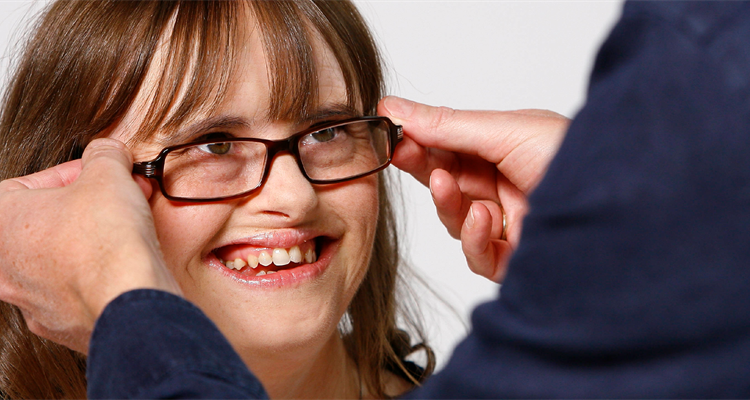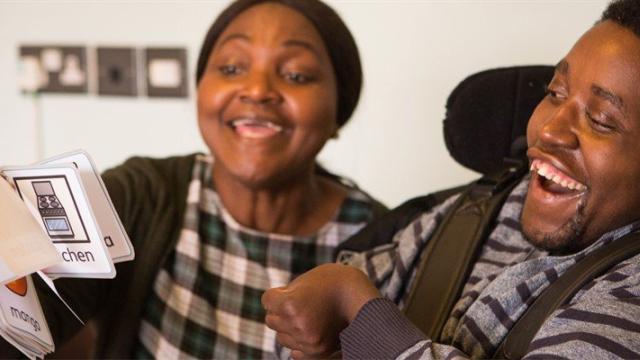
"Everything I thought I knew was misplaced, distorted"
 So here’s my confession...
So here’s my confession...
My first interaction with an adult with a learning disability was a disaster. It was 2005, I was a registrar in a busy general clinic, and the patient was a 20 year old lady with Down’s syndrome. Having completed the examination, in silence, I turned to her dad and said, “Well her vision is OK I suppose, there are some cataracts but I don’t think we would take those out, she seems to be doing ok, shall we see her again next year?”
“I don’t know,” said Dad, “Let’s ask her. Carrie how are you getting on?”
“Well I’m finding it tricky to see the board from the back of the lecture theatre at Uni,” she said.
The floor could have swallowed me up.
I turned to Carrie, apologised and asked if she would let me start the whole consultation again.
The number of assumptions I had made; the inadequacy of my clinical care for her, my dismissive approach to her as a person. I relived it for weeks after, and to this day remember her every time I meet someone with a learning disability. I need not to get it so wrong again.
My journey into the world of Learning Disability Eye Care began in 2008, as part of the Royal College of Ophthalmologists Learning Disability Group. I learned very quickly at the hands of an incredible lady called Gill Levy from SeeAbility that the road ahead was a long one. There were distressing stories of families being denied access to simple surgery that would be life changing; widespread dismissal of visual loss symptoms as ‘behaviours associated with learning disability’. I learnt that anxiety, abrupt changes in behaviour, withdrawal, disinterest in activities which previously were favoured, hesitancy in mobility, reduced communication and understanding, self harm – all were symptoms of visual loss.
I learnt that everything I thought I knew about people with a learning disability, their carers, the impact of visual loss, was misplaced, distorted.
I learnt that the daily fight for parents is a hard one, the fight for attention, the fight for equality of access, the fight for support, the fight for recognition. I learnt that even when parents and supporters had identified vision as an issue, they were dismissed, talked over, bounced from specialist to specialist, ignored or overlooked.
But as the learning disability population survival into adulthood grew, as more adults with learning disabilities were living in the community not institutions, eye conditions that affect all of us began to appear. This was underlined by the breathtaking finding in the CIPOLD report that over 50% of the adults with learning disabilities dying prematurely had vision problems - cataract, diabetic eye disease, glaucoma. Even simple presbyopia (the need for reading glasses or as I call them ‘feeding glasses’ so you can see your food!) for people in their late 40s is a condition which every patient will develop, but goes unnoticed, untreated.
If we are to make a difference to someone’s vision, we need to first establish that there is a problem. In 2010, regular sight testing for a people with a learning disability was a rarity. The reasonable assumption of the general public, and indeed general healthcare, was that if a person could not speak or read, they couldn’t have their sight tested, nor would they benefit from it.
But oh how so far we have come!
SeeAbility’s library of easy read eye care resources and Eye Care Champions who have lived experience of disability and are raising awareness of the importance of eye care in the community, learning disability included in Optometry undergraduate programmes, quality standards for eye care and learning disability published by Royal College of Ophthalmologists and College of Optometrists, NHS England have embarked on an ambitious programme of comprehensive eye care for every child in English special schools, stimulated by SEE, Clear Vision, Gordon Ilett and made possible by SeeAbility's Children in Focus Campaign. The CVI project making sure cerebral visual impairment is included when considering how people with learning disabilities see led by the CVI society and CVI Scotland. The Public Health England guidance about reasonable adjustments in eye care for people with learning disabilities and so so much more!
We need to be more professionally curious; to ask why?; to watch, observe, enquire. To leave at the door all assumptions we might have. To ask carers what would make it easier for the patient, for them. To ask ourselves what other options might be available to support the patient. The need to meet patients where they are, understand their world, how we can behave differently to enable them to engage with services, offer small adjustments in our routine, not require them to change and adapt for us.
Most of all we need to be brave. To get out of our comfort zone to help someone else get back into theirs.
Rachel Pilling is a consultant paediatric ophthalmologist working at Bradford Teaching Hospitals NHS Trust. She has recently been appointed by the University of Bradford as a Professor of Special Needs and Learning Disability Eye Care and is a valued trustee at SeeAbility.


